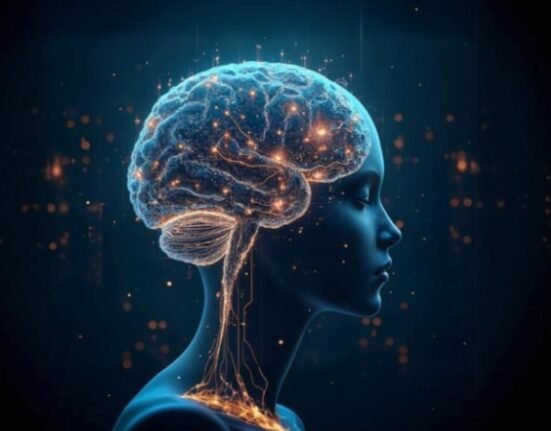Learning disability (LD) is an umbrella term for various learning problems like reading, writing, speaking, calculating and comprehension. In each class and every school, there are some students who are suffering from learning disabilities. These children do not perform according to their intellectual capacity and are easily misunderstood and/or tagged as slow learners, underachievers, emotionally disturbed or intellectually retarded.
Parents as well as teachers think that these children don’t have the ability or interest in studying so they motivate, preach and scold the children from time to time for paying attention in academics. They think that these children are intentionally not paying attention towards their studies. But, in reality, these children are finding it very difficult to understand the learning concepts in spite of putting in their best efforts.
Dyslexia
Dyslexia (reading disorder) is a major type of learning disability. It was well documented in the movie ‘Tare Jameen Par’. Other types are Dysgraphia (writing disorder), and Dyscalculia (disability in numbers and mathematical concepts). Researchers are of the view that Learning disability has a biological basis and occurs because of differences in brain wiring and It is incurable. Parenting, interest, motivation, teaching style, socio-economic status or physical health do not have any association with the presence or absence of LD. The problem of children with LD may range from mild to severe.
Common characteristics of students with Learning Disability
- Academic learning difficulties despite average to above average intelligence.
- Language disorder or delayed spoken language development.
- Boys demonstrate learning disabilities more than girls.
- Difficulty in copying from the blackboard and writing organized sentences.
- Dislikes/avoids written work.
- Works slowly and frequently confuses directions or rushes through work carelessly.
- Mirror writing (q as p, was as saw, ram as Mar, 6 as 9, etc.).
- Substitute, insert or omit letters (limp as lip, went as wet).
- Unable to understand the sequence in multistep mathematical problems.
- Confuses between left and right.
Early Identification and Assessment
Early identification is helpful in developing Individualized programs for children with Learning Disability. During the last two decades, there has been an increasing awareness and identification of children with LD in India. But still, there is a lack of uniformity in guidelines at the national level. The Rights for Persons with Disability Bill passed in 2014 mentions detecting LD in children at the earliest and taking adequate pedagogical and other measures to overcome them but only four states Delhi, Maharastra, Karnataka, and Kerala, have taken various measures for the identification and diagnosis. A few state boards, CBSE and ICSE boards give concessions for students with LD.
Teachers have been doing functional assessment or analysis which is not a medical or psychological assessment that indicates what a child can do and what he cannot do. Based on functional assessment teachers plan and provide specialized services and help the students. The Checklist for LD in the Sarv Siksha Abhiyan Manual (SSA, 2003) is a helpful tool for teachers for initial screening in the school. DALI (Dyslexia Assessment for Languages of India) is the first screening and assessment tool for dyslexia in regional Indian languages.
DALI was developed at the National Brain Research Center and the study was supported by the Department of Science and Technology. It contains two screening tools JST (Junior Screening Tool) for the age group 5-7 years or classes 1 and 2 and MST (Middle Screening Tool) for the age group 8-10 years or classes 3,4 and 5 in four languages Hindi, Marathi, Kannada and English. The National Institute of Mental Health and Neurosciences (NIMHANS), Bangalore has developed an index to assess children with learning disability. There are two levels of this index: level I for children 5-7 years and level II for 8-12 years.
How to help the Children with Learning Disabilities?
Having a learning disability does not mean that a child’s success in life is bound or stopped. Famous personalities like Albert Einstein, Walt Disney, Steven Spielberg, Tom Cruise, Agatha Christie, Abhishek Bachchan, Boman Irani, and Mohammad Ali were suffering from Learning disability. But they did not allow disability to come in the way of success.
Actually, many LD students have the same academic potential as students without LD but require assistance in unveiling their potential and turning it into achievement. Treatment for disorder is provided in school and involves a multidisciplinary approach involving teachers, school psychologists, special educators and parents.
- Accept the child’s problem and don’t blame him or her for his problem or fate. Acceptance is the first step towards solution and growth. It is very difficult for parents to accept that their child is suffering from a specific problem. Initially, parents show denial, avoidance or rejection towards the problem.
- Individualized education programs (IEPs) should be prepared on the basis of assessment and functional analysis. Recourse rooms and special class placement are helpful for these students.
- The most common treatment for a learning disability is special education and speech and language therapy.
- Don’t compare the child’s performance with other students. Let him/her develop own style of learning.
- Focus on the positive side of the learner. The child should not be defined by his/her disability. Except for the particular problem area, there are other areas of strength also. Nurture the activities where they excel.
- Activity-based curriculum rather than chalk and board method is helpful for such students.
- Using a multisensory approach in the learning process is helpful for these children
- Teach step by step. Don’t jump from one topic to another.
- Identify how a child learns best. Find whether he/she is a visual learner (learns best by seeing), auditory learner (learns best by listening), or kinesthetic learner (learns best by doing and moving) and work on that part.
- As a parent think about the child’s life success instead of school success.
- Parents and teachers should keep themselves updated with the new teaching-learning strategies helpful for these children.
- Take the help of a professional counsellor or psychologist for adequate counselling.













Leave feedback about this